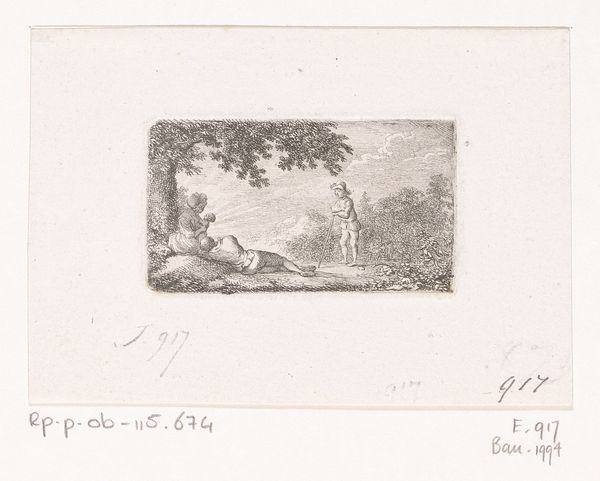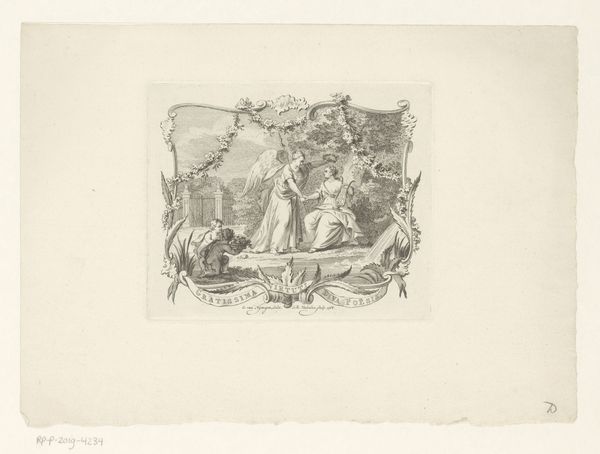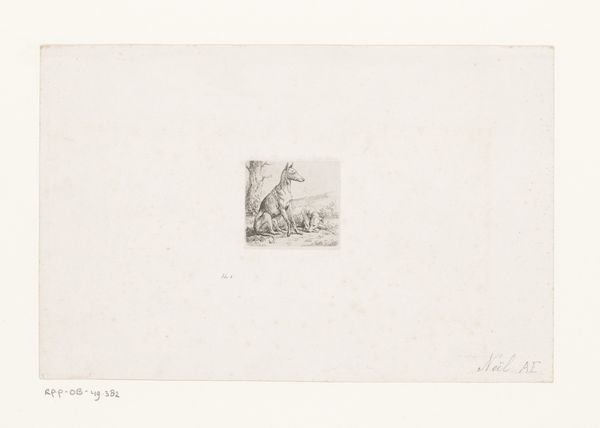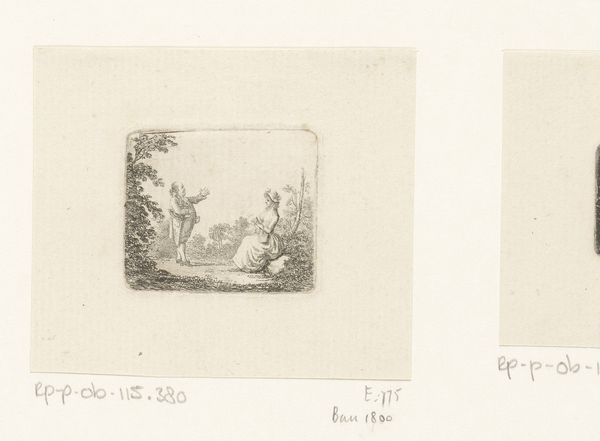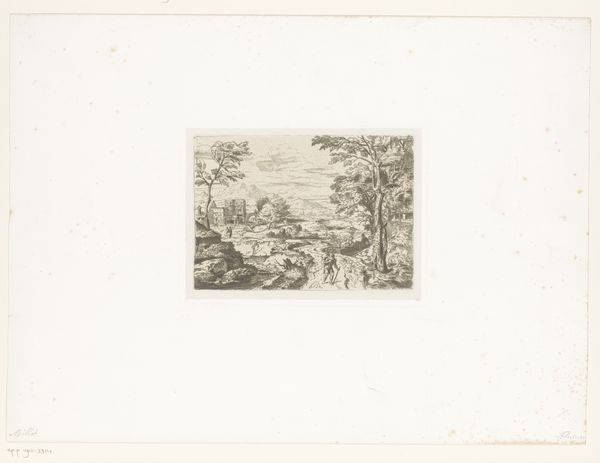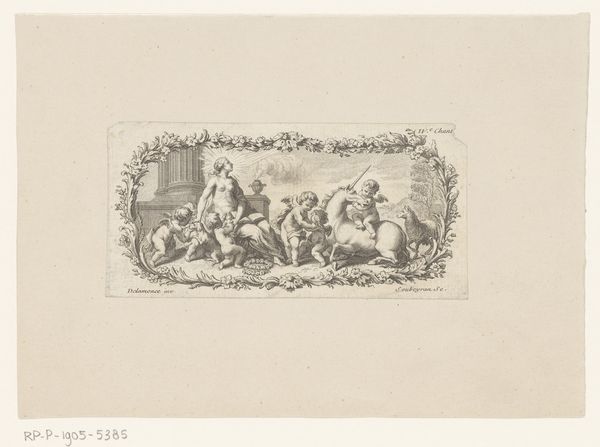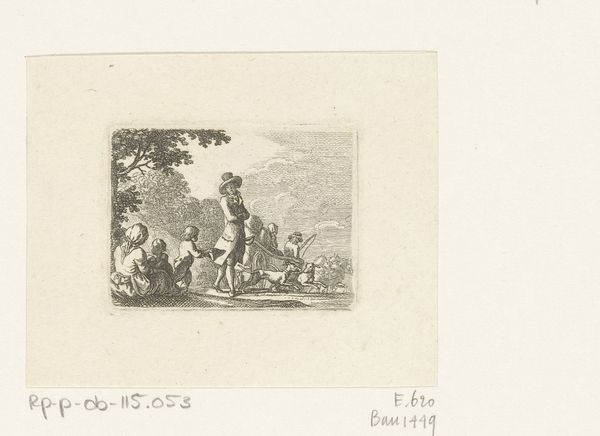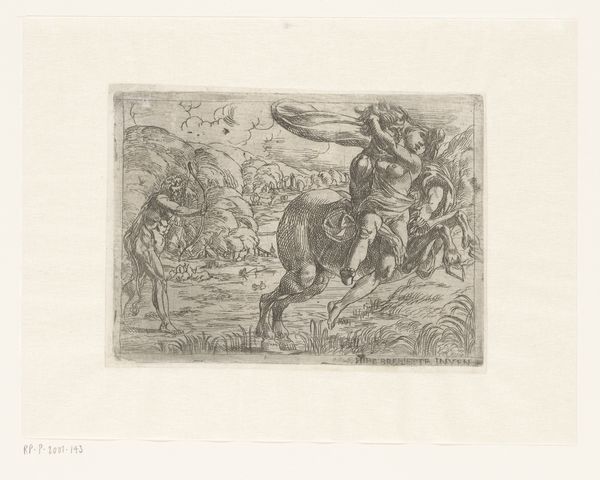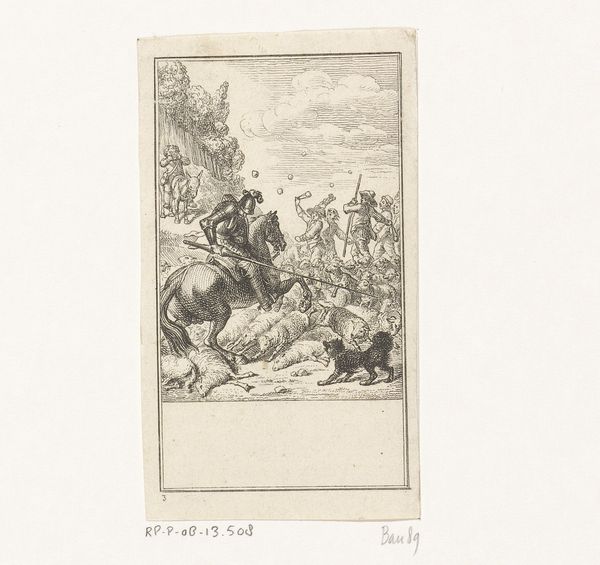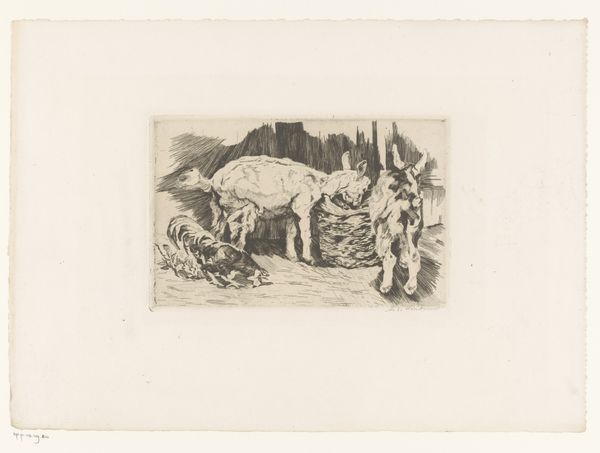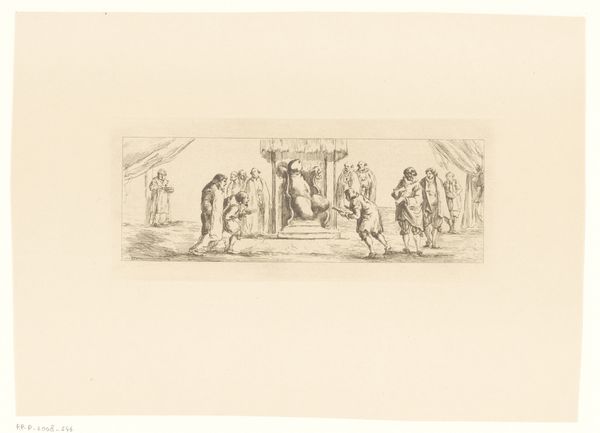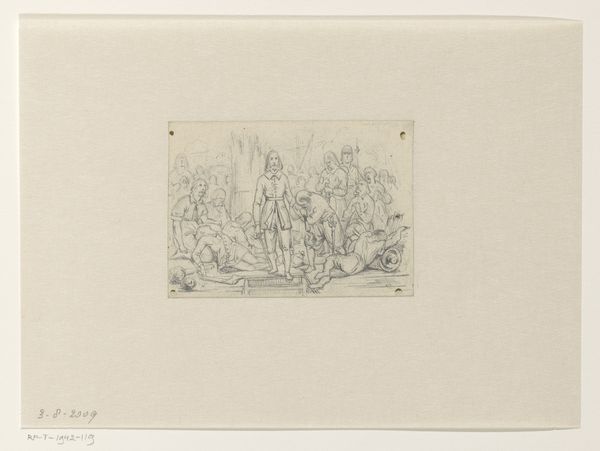
Herderspaar toont affectie onder een boom met rechts drie schapen 1794
0:00
0:00
danielnikolauschodowiecki
Rijksmuseum
print, engraving
# print
#
old engraving style
#
landscape
#
white palette
#
figuration
#
romanticism
#
genre-painting
#
engraving
Dimensions: height 25 mm, width 58 mm
Copyright: Rijks Museum: Open Domain
Editor: So, this is Daniel Chodowiecki's "Herderspaar toont affectie onder een boom met rechts drie schapen" from 1794. It’s an engraving, and it's quite small. I'm struck by how idyllic it seems, but also how… constructed? What catches your eye? Curator: The most compelling element is how the artist's choice of engraving as a medium informs the artwork's meaning. Chodowiecki, in using printmaking, participates in the democratization of images, making art accessible to a broader audience beyond the wealthy elite who could afford paintings. The labour intensive nature of engraving contrasts the romanticised leisure of the herders in the image, hinting at a deeper social commentary on labour, class, and consumption of idealized rural scenes. How does the reproductive nature of the print change our understanding of it? Editor: That's a really interesting point. I hadn't considered the implications of it being a print and accessible to the masses. So the medium itself is making a statement about society? Curator: Precisely. Engraving, unlike painting, allowed for multiple reproductions. Chodowiecki, a successful artist of his time, could make money from making engravings; they would be accessible for private ownership and would adorn household walls of middle-class citizens, fostering a sense of shared culture through replicated imagery. The fine lines and detail of the engraving also suggest a level of craftsmanship, a deliberate act of skilled labour for mass consumption. Do you see that commentary in the print now? Editor: Yes, absolutely. Seeing it just as a pastoral scene feels really superficial now that I understand its mode of production. It’s less about the romance and more about how the image circulates. Curator: Exactly! And considering the historical context of the late 18th century, with burgeoning capitalism and shifting class structures, the image becomes even more layered. Editor: This has totally changed how I see prints. I am grateful for this new way of considering material realities, thank you! Curator: A pleasure! Keep questioning the materials and you will unlock deeper meanings!
Comments
No comments
Be the first to comment and join the conversation on the ultimate creative platform.
